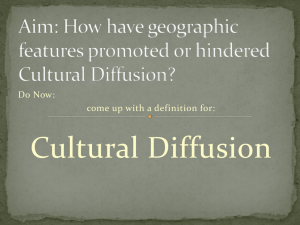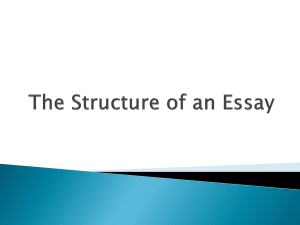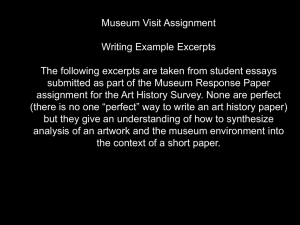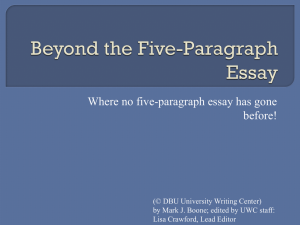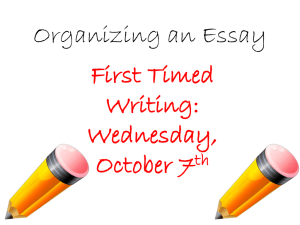Writing a five paragraph argumentative essay
advertisement
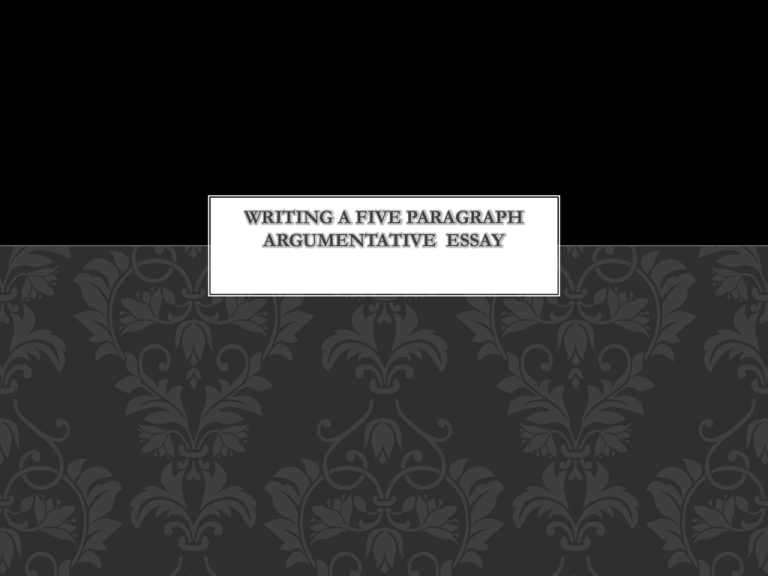
WRITING A FIVE PARAGRAPH ARGUMENTATIVE ESSAY WHAT ARE THE KEY COMPONENTS OF AN ESSAY ? 1. Introduction 2. 3 Body Paragraphs 3. Conclusion WHAT ARE THE KEY COMPONENTS OF AN INTRODUCTION 1. 2. 3. Opening sentences: set the tone of what is to come. The opening sentences should grab the readers attention, giving them a reason to want to read on. This is also a good place to provide any back ground information that may be important to the reader like title(s) and author(s) of a text that is being written about. Thesis statement: a clearly worded answer to a question and/or a clearly worded declaration of the view(s)/idea(s) a writer will support, assert, or prove in a paper. This thesis statement focuses the essay towards an insight or position that is unique to the writer in one and on some occasions two precise sentences. Forecast: delineates the subtopics/claims of support that will follow in the essay and does so in the order in which they will appear. BODY PARAGRAPHS Body paragraphs develop a convincing case to prove the claim advanced in the thesis. They explore the ideas relevant to the thesis; evidence is presented in a logical fashion, and is interpreted (elaborated on) in ways that clearly support the thesis. Body paragraphs are made up of the following elements: TOPIC SENTENCE The topic sentence of each body paragraph introduces some element of the thesis that will become the subject of the paragraph. These should draw on the thesis and/or the forecast ideas and wording to keep the central argument actively in play for the readers. Strong topic sentences do not just repeat the thesis or forecast, but rather develop an aspect, or “chunk” of the thesis or forecast that will be further expanded in the paragraph. ANALYSIS Analysis is a sentence that follows the topic sentence and extends the idea and gives readers the time to absorb the idea before shifting into the specific evidence that will be used to prove it. EVIDENCE Like the evidence presented in a legal case, the evidence presented in an essay should persuade readers that a writer’s point of view is worth considering. Every bit of evidence in an essay should point toward the validity (the truth) of the thesis. Each paragraph should have it’s own evidentiary citations. This evidence should also come from a reliable source. Where the evidence comes from is almost as important as the evidence itself. A few examples of reliable sources are: newspapers, magazines, and expert testimony. GOOGLE IS NOT A SOURCE. Google is a search engine that can lead you to a source. ELABORATION /INTERPRETATION All evidence must be elaborated/interpreted and linked to the point being proven. In an essay, it is the job of the writer to provide this elaboration for the reader: readers should not be expected to elaborate/interpret the evidence presented or required to make the link between evidence and the thesis ANCHOR The final component of a body paragraph, does as it’s name suggests: it anchors the evidence and elaboration/interpretation presented in the body paragraph to the overall claim of the paper and reminds readers of the overall purpose of the paper. In addition, the anchor of a body paragraph allows for a clear connection between paragraphs, serving as a transition to the next idea. Keep in mind that the challenge of writing a strong anchor is refraining from allowing them to become repetitive by simply repeating the thesis or topic sentence. CONCLUSION The final section of the essay, the conclusion is often the most difficult to write. The conclusion of an essay should bring the writer and readers back into agreement about what the essay set out to prove and reemphasize the value of the argument. There are two elements in a conclusion: SUMMARY Without simply repeating the thesis, the conclusion should contain a reminder of the primary claim of the paper. In addition, without simply listing evidence, the conclusion should refer to the significant point which were offered as proof of the thesis. INTENSIFIED INSIGHT In addition to reviewing the essence of an essay, the conclusion should provide insight that deepens or intensifies the significance of the claim stated in the thesis. The challenge is to phrase an insight, which intensifies the claim without introducing a new argument to requires additional proof. While readers may look for broader or deeper meaning in a conclusion, they are not willing to accept assertions that are not supported by the essay itself. The writer must also avoid clichés, statements or ideas that have been overused and have lost their originality, and generalizations that oversimplify the significance of the essay.
